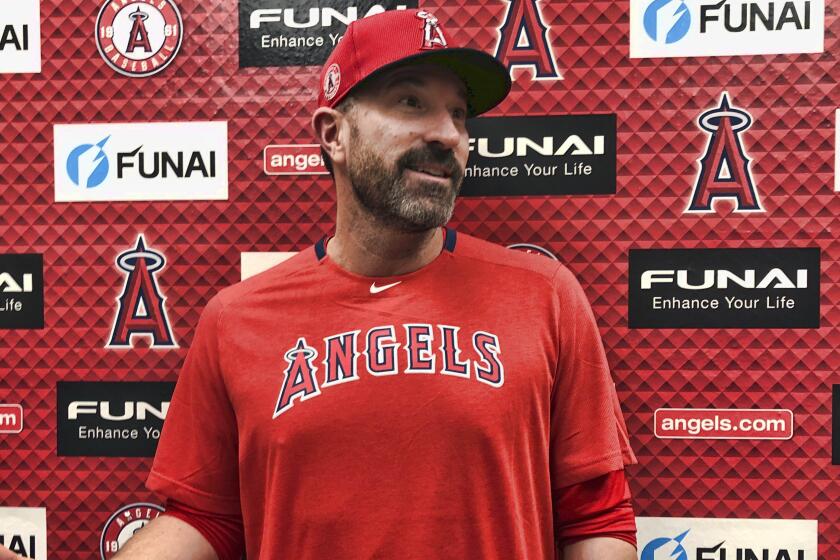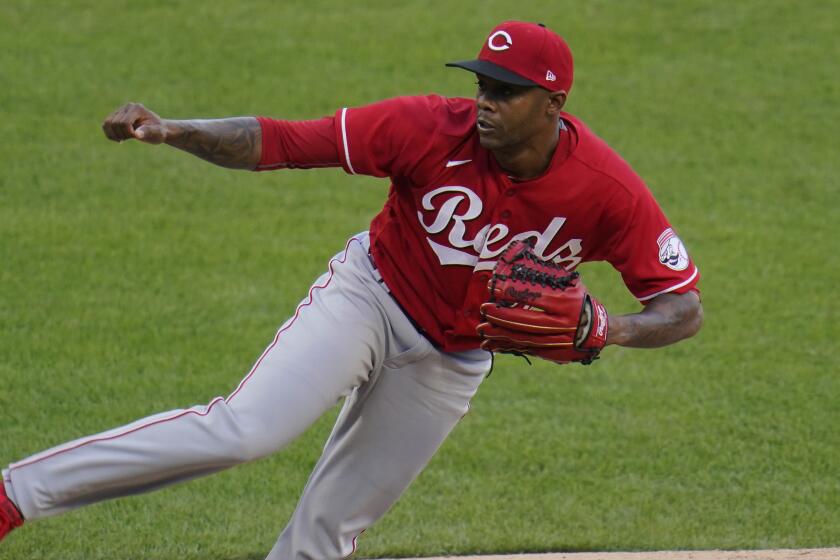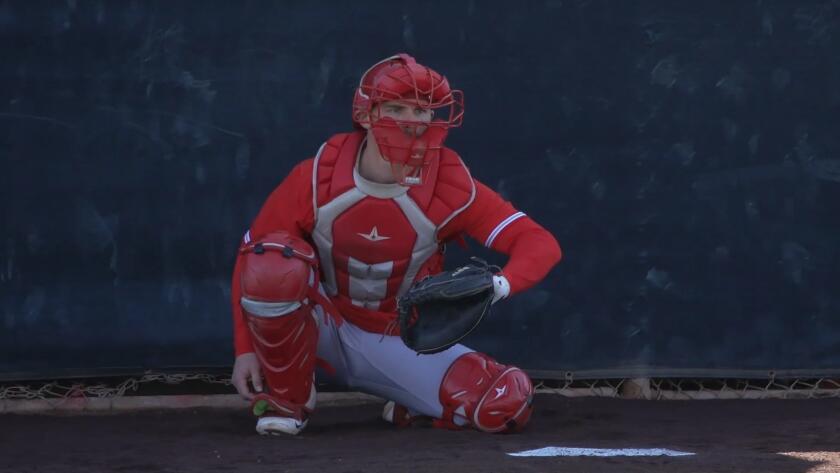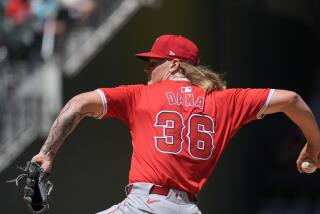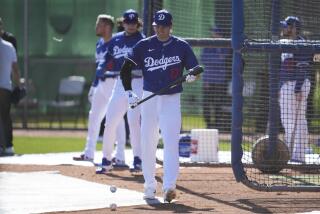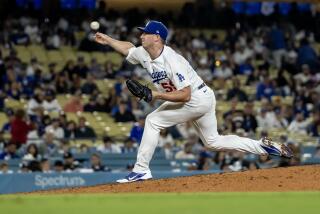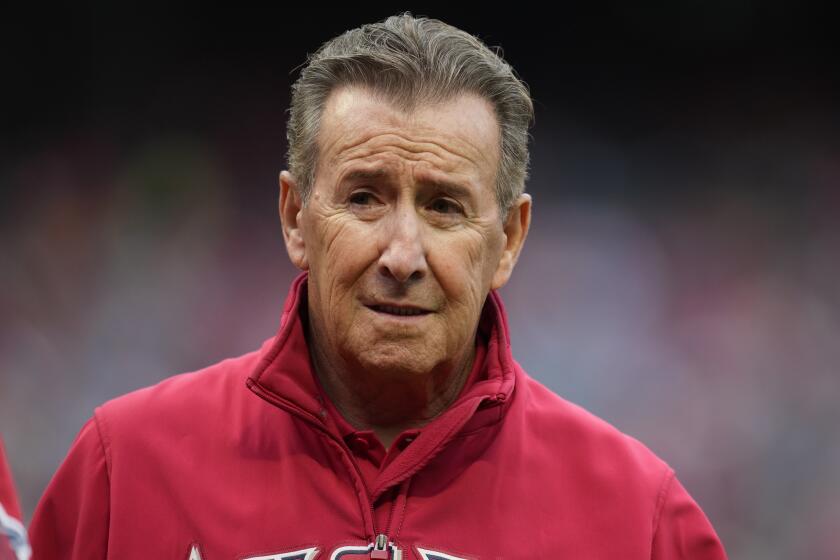Angels’ Andrew Heaney loves the instant feedback from his new Rapsodo for good measure
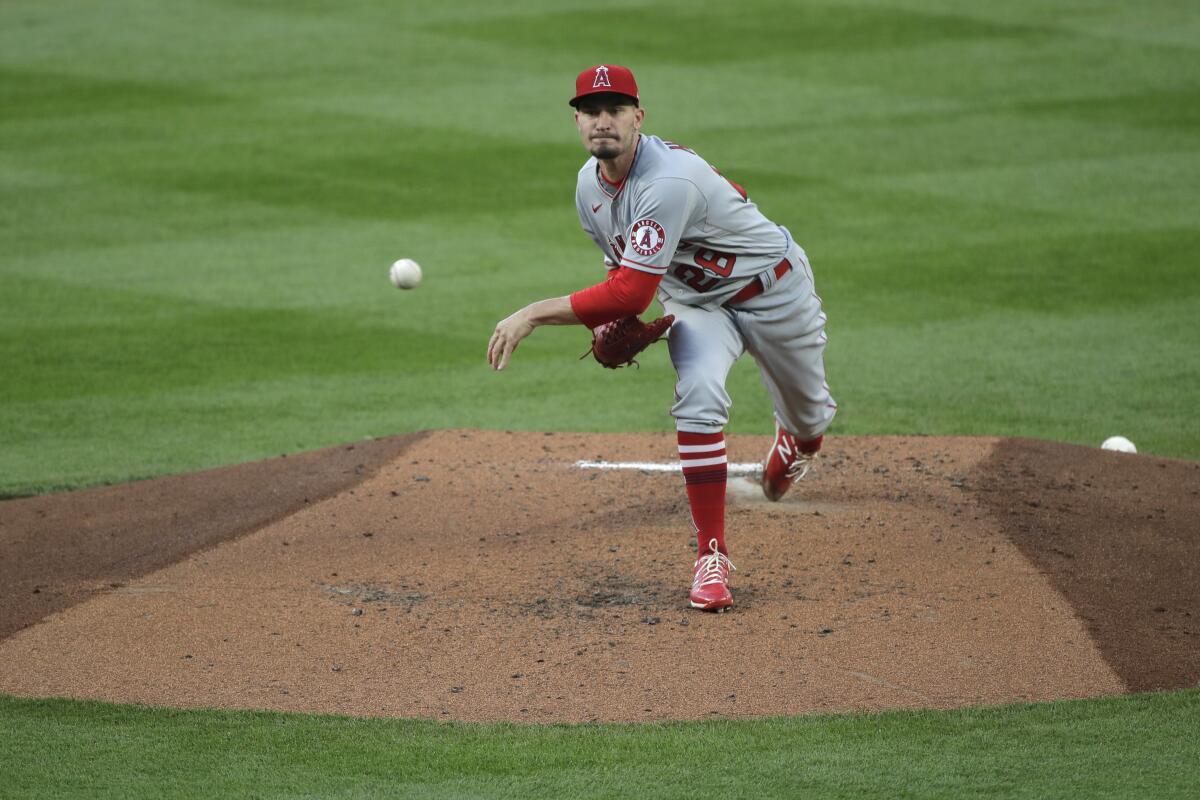
Every time Andrew Heaney showed up at Oklahoma Christian University’s indoor baseball facility this winter, throwing several days a week off a mound in one of three pitching tunnels, the Angels starter would draw a crowd of players from the school’s Division II team.
Sometimes, they simply gazed at the left-hander’s delivery, mesmerized by the consistency of his arm stroke and command in bullpen sessions. Other days, they surrounded him on benches and quizzed him about his professional journey.
“One of my catchers said, ‘I can catch this guy with my eyes closed, because I just put my glove somewhere and he hits it,’” said Lonny Cobble, the coach at the small private school just north of Heaney’s hometown of Oklahoma City and a few miles from where the 29-year-old pitcher lives in the offseason.
“It’s great for our kids just to be around somebody with that kind of talent.”
And some of the coolest moments, Cobble said, were when Heaney would show up with his brand-new Rapsodo pitching machine.
“I don’t know if he’s told you about some of the technology he’s been using,” Cobble relayed by phone on Wednesday. “That thing is incredible.”
Mickey Callaway is under investigation by the MLB over sexual harassment allegations. Matt Wise steps in as the Angels’ interim pitching coach.
For many in baseball, the high-tech pitch-tracking system is nothing new. It has become one of the physical embodiments of the sport’s modern data age, measuring everything from spin rate to pitch break.
For Heaney, however, who purchased a Rapsodo device and an accompanying motion-capture camera of his own for the first time this winter, the machine represented something of a shift. Seven years into an MLB career defined by tantalizing potential but inconsistent production, he decided to attack this offseason with a revamped regimen and increasingly meticulous approach. He bought into advanced analytics and information.
“There’s definitely some times where I probably get a little bit stubborn,” Heaney said Wednesday, before the Angels’ first spring training workout for pitchers and catchers in Tempe, Ariz. “When you’ve been in the same league and faced a lot of guys for however many years or however many innings I’ve faced guys, there is not an element of surprise as much anymore. I think that probably some evolution needs to happen with how I approach hitters and the way that I might use my stuff.”
That kind of self-critique was hardly ever called for early in Heaney’s career. Cobble remembers coaching against the pitcher in high school, when he dominated the Oklahoma prep scene. After earning All-American honors at Oklahoma State and becoming the ninth overall pick in the 2012 MLB draft, Heaney was traded to the Angels ahead of the 2015 season and posted a 3.49 ERA in 18 starts.
Since then, however, he has struggled to put together another breakthrough campaign. His 2016 and 2017 seasons were derailed by Tommy John surgery. The last three years, he’s posted three straight 4.00-plus ERAs.
“The big thing for Andrew, for me, is to really understand how to utilize his weapons and how to put hitters away,” Angels manager Joe Maddon said. “That’s it. It’s probably a game-planning or sequencing kind of thing, because he has all the ability, all the tools. He just needs to know how to parcel them out a little better.”
That’s where Heaney hopes his embrace of data and technology pays dividends this season, his last before becoming an unrestricted free agent.
“I wasn’t specifically working on any single pitch,” said Heaney, who couples a deceptive high-spin fastball with a light-breaking curveball and changeup. “I just wanted to get a better understanding of what I do, how I can be better with it, what little changes I can make here and there.”
Heaney communicated frequently with former Angels pitching coach Doug White over the winter, sending him slow-motion videos of his delivery and calling him frequently to help analyze the data being recorded by his Rapsodo, a $3,500 machine that provides instant data on spin rate, axis and efficiency as well as strike zone analysis, horizontal and vertical break and 3D trajectory.
The key, Heaney said, was “having the ability to relay information, video, numbers, and not just, ‘Hey, here’s how it felt coming out of my hand’”
New Angels general manager Perry Minasian bolstered the roster during the offseason, but did not add a high-priced free agent or make a blockbuster trade.
An analytically minded coach who joined the Angels for one season in 2019 from the Houston Astros organization, White had been trying to convince Heaney to take such an approach for the last two-plus years.
“I was telling him, ‘Hey man, if you really want to do this thing, you’ve got to get your own gear,’” White said, adding: “[Now] he’s taken off with it. It’s been really fun to watch.”
That should be music to the ears of an Angels team hoping for a true ace to emerge. Not since Garrett Richards — another Oklahoma native who has done offseason training at Oklahoma Christian — in 2014 has the club had a pitcher make at least 20 starts with a sub-3.00 ERA in a season.
“I just felt like it was an investment in myself,” Heaney said. “I’m really happy I did it.”
Angels pitchers arriving late to camp
The Angels announced that pitchers Junior Guerra, José Quijada, Jose Alberto Rivera and Jaime Barria are late to camp because of visa issues. Left-hander Alex Claudio is also expected to miss at least one to two weeks with a right hip infection, Maddon said.
The Angels began spring training for the 2021 season with pitchers and catchers reporting in Tempe, Ariz.
More to Read
Go beyond the scoreboard
Get the latest on L.A.'s teams in the daily Sports Report newsletter.
You may occasionally receive promotional content from the Los Angeles Times.

